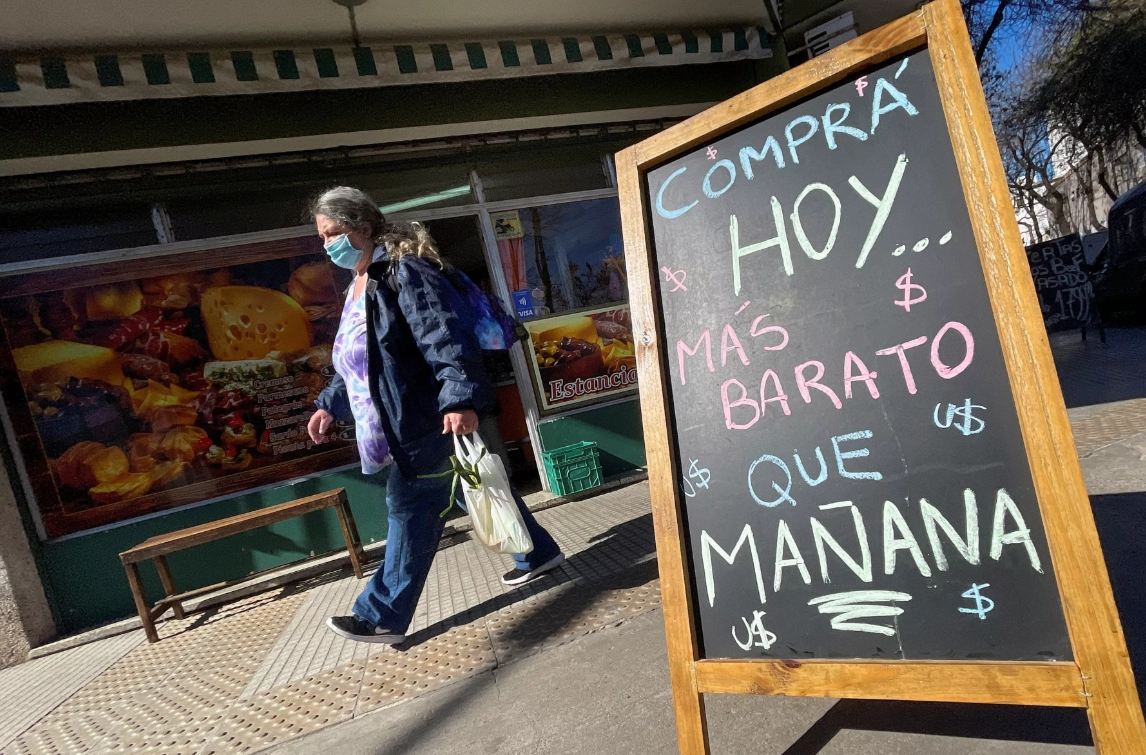In Latin America, the implementation of a restrictive monetary policy as the effective and relevant means to control and reduce inflation is a decision that is not objected to by the central bank’s boards of governors or directors. The same view is shared by the heads of multilateral financial organizations and members of the boards of directors of credit rating agencies and much of the U.S.-based transnational banking sector. In mainstream academic circles, it is argued that restrictive monetary policy is the only way to control high inflation.
The consensus in all these circles is that it is essential to observe results in terms of reduced resilience in labor markets before considering a change in decisions and a systematic reduction in benchmark interest rates. Jerome Powell, Chairman of the Board of Governors of the U.S. Federal Reserve, noted in his speech at the Jackson Hole meeting of central bankers in August of this year that strong growth and the resurgence of strength in the labor market may require a more forceful response in terms of increases in the benchmark interest rate.
In Latin America’s largest economies, during the second half of 2021, a policy of increasing benchmark interest rates was initiated, even before the U.S. Federal Reserve proceeded in the same way. In Brazil, in May 2021 the reference interest rate was raised from 2.75% to 3.5%. Thereafter, increases continued until reaching 13.75% in August 2022. Throughout the period, it was argued that this was the necessary measure to deal with inflation. In Argentina, the financial monetary disarray has been total for some time now, with the added instability of the exchange rate and the inability to meet the foreign debt commitments contracted during the Macri administration with the IMF. In Mexico, Colombia, and Chile, the increases will start in the second half of 2021, accumulating in Colombia and Chile more than 10 points of increase in the reference interest rate in a little more than a year.
To date, although since the second half of 2022, there has been a reduction in the increase in the consumer price index, which deepened in the first half of this year, only the Central Bank of Chile has made a significant reduction, of 175 basis points from July to September 2023, in the reference interest rate. In Brazil, Colombia, and Mexico, two-digit benchmark interest rates are maintained, following the guidelines of the central banks of the United States, England, and the Eurozone, among other developed countries.
In Brazil, for months the federal government has criticized the monetary policy implemented by the Central Bank without achieving a significant change. In May of this year, when the Committee in charge of setting monetary policy on behalf of Brazil’s Central Cank (COPOM) kept the reference interest rate unchanged, the government’s criticism was joined by criticism from trade unions (Força Sindical and CUT) and business organizations (CNI). The COPOM agreed to a reduction of 50 basis points at its August meeting. However, in arguing its decision, the Committee pointed out that there are still high inflation nuclei and resilience in the labor markets of several countries, so there is no guarantee that progress will be made in this direction. The institution acknowledged that in the country the set of economic indicators is consistent with a slowdown, which does not escape its estimates.
In Colombia, the board of directors of the Central bank decided to maintain the benchmark interest rate at the same level without considering the signals to proceed otherwise from the federal government, the business association, and the banking association itself. According to these actors, the reduction in the reference interest rate is a necessary measure to allow the economy to grow, while the current financial costs put pressure on households and make investments unviable for numerous companies.
At the Jackson Hole central bankers’ meeting, Powell also noted that the June and July data of declining core inflation is welcome, but two months of good data is just the beginning. The emphasis remains, without explanation, on reaching 2% which, according to this reading, must include the rise in prices of what is measured by core inflation. Powell makes the central point guiding monetary policy decisions when he states that a period of below-trend growth, as well as some weakening of labor market conditions, is required to bring inflation back down to 2% on a sustainable basis. The executive director of the European Central Bank holds the same view. So, in line with this criterion, at its meeting on Thursday, September 14, the Central Bank’s board of directors decided on its tenth consecutive increase in the benchmark interest rate. The act may push several economies in the region into recession or deepen it in those that are moving in that direction, such as Germany, which has recorded two consecutive quarters of negative growth this year.
Everything indicates that the weakening of labor market conditions is accompanied by lower growth or recession. Also, the rise in interest rates poses problems for families and social actors who depend on bank credit. But it is also a positive fact for all those who can make financial placements without these being a burden on their expenses. For a small group of large financial lenders, the criterion of the level of the real interest rate is not the relevant reference. For them, it is the interest rate pure and simple, since they keep their resources in the financial circuits without having to consider returns to the world of production. For this small segment of the population, the present is a time of bonanza. For the governments of Latin America that are trying to promote changes to reduce social inequality, on the other hand, it is a time of notable difficulties, a time of economic hardship.
*Translated by Janaína Ruviaro da Silva from the original in Spanish.











